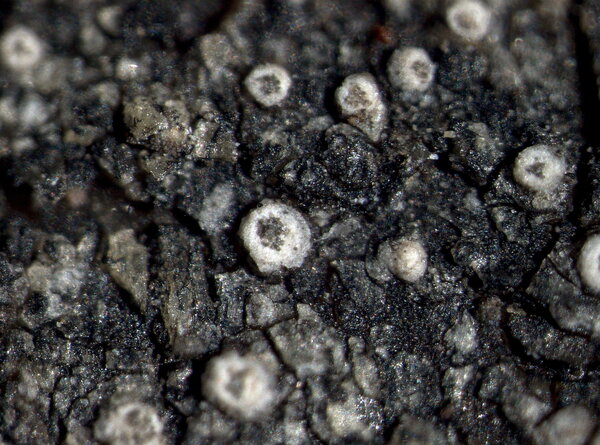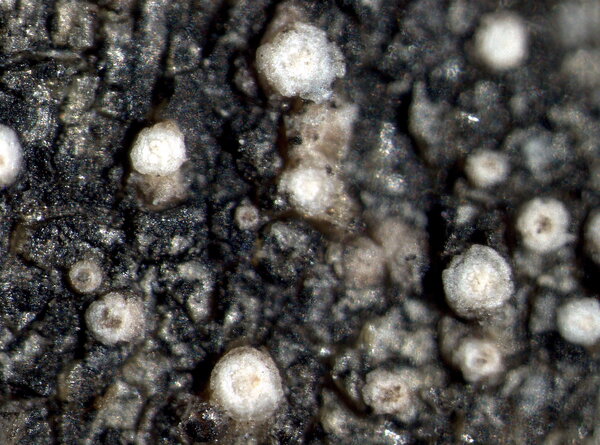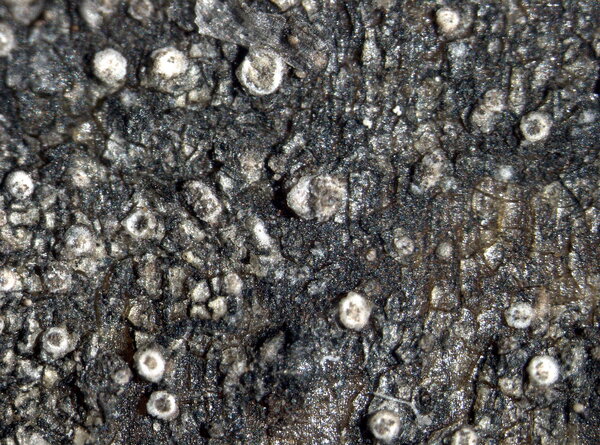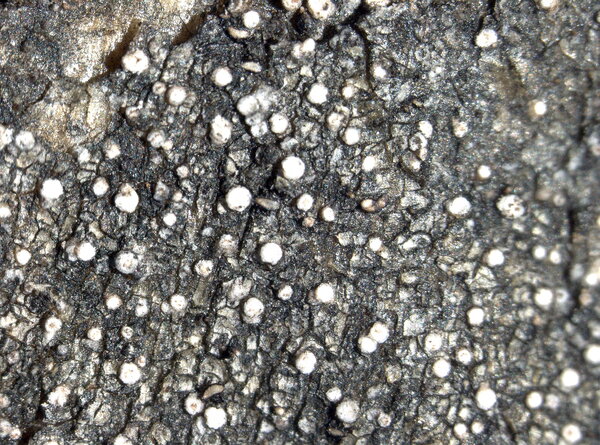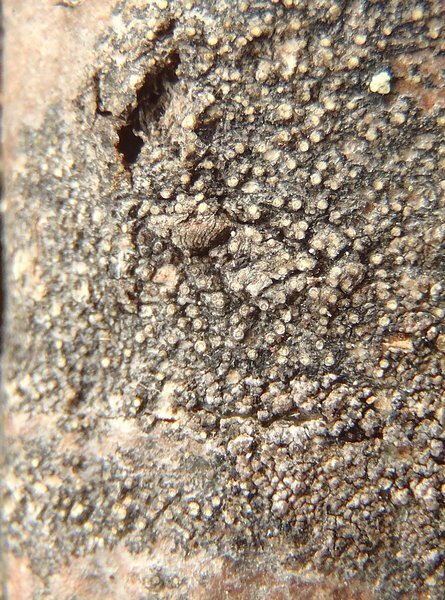Lendemeriella sorocarpa (Vain.) S.Y. Kondr.
in Kondratyuk & al., Acta Bot. Hung., 62, 1-2: 121, 2020. Basionym: Placodium sorocarpum Vain. - Ann. Soc. zool.-bot. Fenn., 9: 320, 1929.
Synonyms: Caloplaca sorocarpa (Vain.) Zahlbr.
Distribution: N - Frl (vidi!), TAA (Hinteregger 1994).
Description: Thallus crustose, continuous, areolate or warted, rather thin, greenish white to greenish grey or grey, often delimited by a dark prothallus, with numerous, perfectly circular, (0.1-)0.25-0.5 mm wide, at first immersed, then protruding to almost stipitate and barrel-shaped, whitish to greenish grey soralia which are often surrounded by a whitish, thin thalline rim. External soredia brown, up to 20(-30) µm in diam., surrounded by a continuous wall of more or less isodiametrical (up to 7 µm wide) to somewhat elongate cortical cells, the brown pigment K+ fuscous brown, N+ reddish brown. Apothecia extremely rare, 0.2-0.3 mm across, at first immersed, then sessile, with a concave to flat, rusty-orange to red-brown, rough disc, a thin proper margin, and sometimes a poorly developed thalline margin. Proper exciple brownish in outer part, colourless within, of radially arranged hyphae, sometimes overlain by a paraplectenchymatous thalline exciple in lower part; epithecium reddish orange, K+ purple-red, with a granulose epipsamma; hymenium colourless, 70-80 μm high; paraphyses simple or rarely sparingly branched, 2-3.5 μm thick, not or slightly swollen at apex; hypothecium colourless. Ascospores 2-celled, polarilocular, hyaline, ellipsoid, 8-15 x 5-8 μm, the equatorial thickening (“septum”) 2-4.5 μm. Pycnidia rare, orange to red-brown. Conidia bacilliform, 4.5-6 x c. 1 μm. Photobiont chlorococcoid. Spot tests: thallus K-, C- or C+ pale yellow (soralia only), KC-, P-; pigmented external soredia K+ fuscous brown, N+ reddish brown; apothecial disc K+ purple-red, C-. Chemistry: thallus with roccellic acid; apothecia with different anthraquinones. Note: a usually sterile lichen with a grey thallus and concolorous, circular, often raised soralia; easily overlooked, it is one of the most common sorediate crusts growing on the branches of Rhododendron. It was included in the Italian red list of epiphytic lichens as “Critically Endangered” (Nascimbene & al. 2013c).
Growth form: Crustose
Substrata: bark
Photobiont: green algae other than Trentepohlia
Reproductive strategy: mainly asexual, by soredia, or soredia-like structures (e.g. blastidia)
Commonnes-rarity: (info)
Alpine belt: absent
Subalpine belt: rather rare
Oromediterranean belt: absent
Montane belt: extremely rare
Submediterranean belt: absent
Padanian area: absent
Humid submediterranean belt: absent
Humid mediterranean belt: absent
Dry mediterranean belt: absent
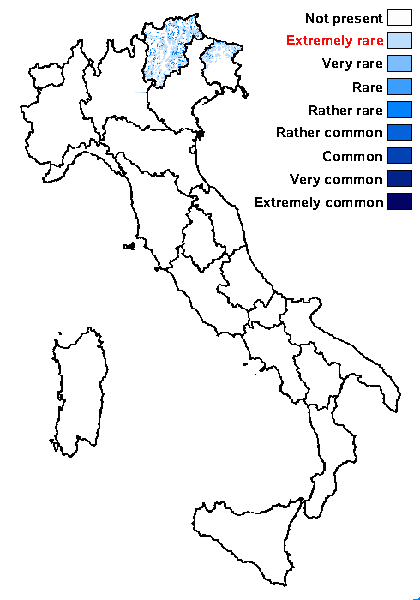
Predictive model
Growth form: Crustose
Substrata: bark
Photobiont: green algae other than Trentepohlia
Reproductive strategy: mainly asexual, by soredia, or soredia-like structures (e.g. blastidia)
Commonnes-rarity: (info)
Alpine belt: absent
Subalpine belt: rather rare
Oromediterranean belt: absent
Montane belt: extremely rare
Submediterranean belt: absent
Padanian area: absent
Humid submediterranean belt: absent
Humid mediterranean belt: absent
Dry mediterranean belt: absent

Predictive model
 INDEX FUNGORUM
INDEX FUNGORUM
 GBIF
GBIF
 DOLICHENS
DOLICHENS
